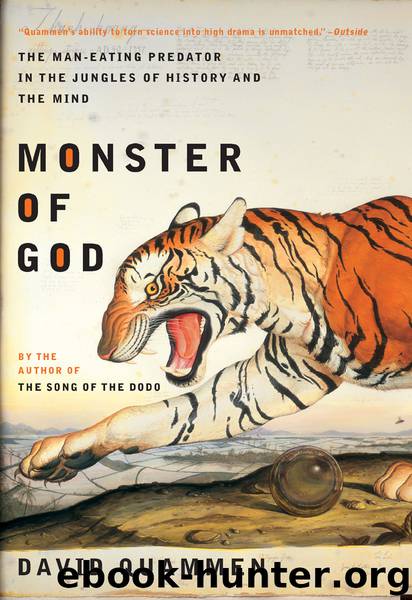Monster of God by David Quammen

Author:David Quammen
Language: eng
Format: epub, mobi
Publisher: W. W. Norton & Company
Published: 2003-04-19T04:00:00+00:00
43
The growth curve of the Romanian bear population over the past sixty years, as charted by ICAS, shows a peculiar correlation between ursine abundance and autocratic oppression: positive. Bad governance, of a very particular sort, has been good for Ursus arctos in the Carpathians.
At the start of the Communist era, in 1945, following decades of parliamentary turmoil and disorderly constitutional monarchy, there were fewer than a thousand bears. By the time Gheorghiu-Dej established his chieftaincy of the regime, in 1952, the population had increased by fifty percent, thanks to good habitat and a postwar decline in subsistence-driven poaching. In 1965, when Gheorghiu-Dej’s death opened the way for Nicolae Ceauşescu, as I’ve mentioned, the bear count was just above four thousand. Over the next decade, the early phase of Ceauşescu’s bear-killing mania, during which he shared his hunts with select foreign dignitaries and a limited circle of Romanian courtiers, the population dipped slightly and then rose back. By 1978, it stood at 5,204. The Forest Department was now essentially farming bears, through the program of supplemental feeding, which probably helped increase both the growth rate of individual animals and the survival rate of cubs. Meanwhile, the department’s conscientious forestry management (devoted to timber extraction, but on a long-rotation schedule) had the effect of preserving large expanses of excellent habitat. It was a miracle of good fortune that, as Ceauşescu drove the country toward clumsy industrialization, then squeezed its economy flat to pay foreign debts, he never launched a program of liquidating Romania’s forests for exportable timber. So the bear population flourished, and the Forest Department reserved it for Ceauşescu’s personal amusement.
By 1984, despite the Massacre of Bistriţa a year earlier, the tally was 6,713. Although this figure and the others are misleadingly exact (the real population may have been lower or higher by hundreds), unquestionably there were many, many bears. The precise numbers are suspect, but the directional trend can be trusted, since the methods of counting didn’t change much from year to year.
The trend continued upward. In 1988, the last full year of Ceauşescu’s dictatorship, the Forest Department calculated a bear population of 7,780. That’s amazingly high for the area of habitat in question, which totals somewhere in the range of 3.1 to 7.7 million hectares, depending on which Romanian source you accept. Back in America, the Greater Yellowstone Ecosystem encompasses roughly the same total area (5.6 million hectares) but supports only about five hundred grizzly bears. In other words, at the peak of the curve, the density of the species Ursus arctos in the Romanian Carpathians was fifteen times the present density in Yellowstone National Park and its contiguous forests, which constitute one of the world’s most celebrated bear sanctuaries. This discrepancy says as much about political arrangements, and about thresholds of social tolerance, as it does about the sustenance value of acorns, bear chow, horsemeat, and deliquescent fruit.
But what exactly does it say? That autocracy is beneficial to bears? That sport hunting, confined to a small circle of
Download
This site does not store any files on its server. We only index and link to content provided by other sites. Please contact the content providers to delete copyright contents if any and email us, we'll remove relevant links or contents immediately.
The Lonely City by Olivia Laing(4568)
Animal Frequency by Melissa Alvarez(4150)
All Creatures Great and Small by James Herriot(3986)
Walking by Henry David Thoreau(3681)
Exit West by Mohsin Hamid(3634)
Origin Story: A Big History of Everything by David Christian(3472)
COSMOS by Carl Sagan(3347)
How to Read Water: Clues and Patterns from Puddles to the Sea (Natural Navigation) by Tristan Gooley(3240)
Hedgerow by John Wright(3106)
How to Do Nothing by Jenny Odell(3102)
The Inner Life of Animals by Peter Wohlleben(3099)
How to Read Nature by Tristan Gooley(3078)
Project Animal Farm: An Accidental Journey into the Secret World of Farming and the Truth About Our Food by Sonia Faruqi(3018)
Origin Story by David Christian(2991)
Water by Ian Miller(2950)
A Forest Journey by John Perlin(2915)
The Plant Messiah by Carlos Magdalena(2745)
A Wilder Time by William E. Glassley(2690)
Forests: A Very Short Introduction by Jaboury Ghazoul(2671)
